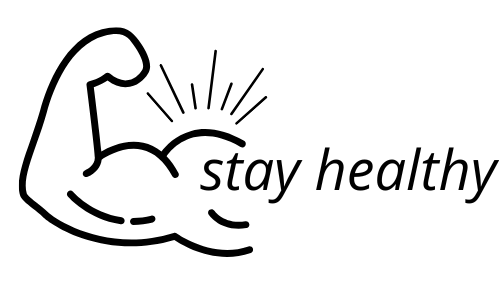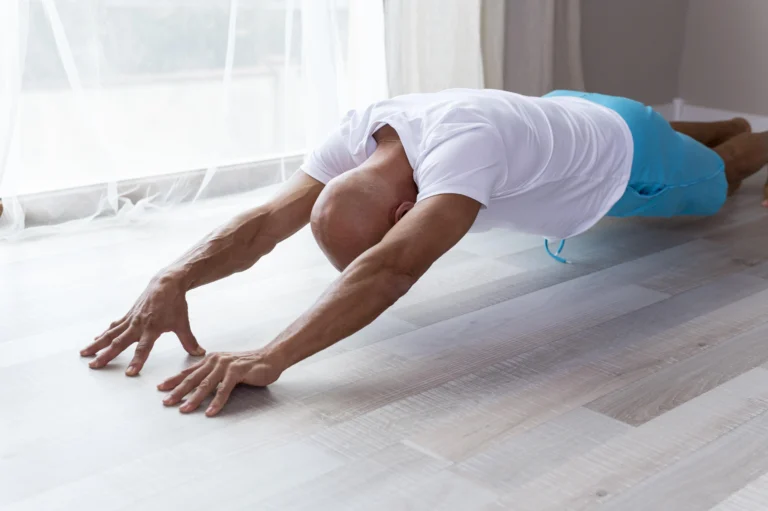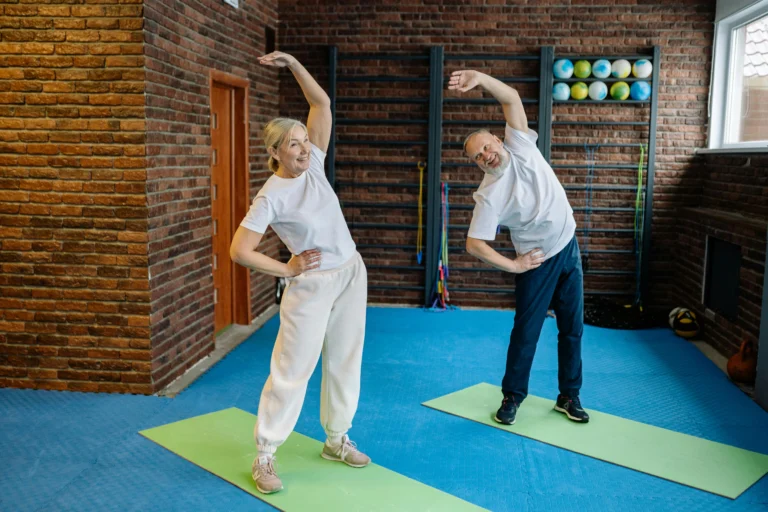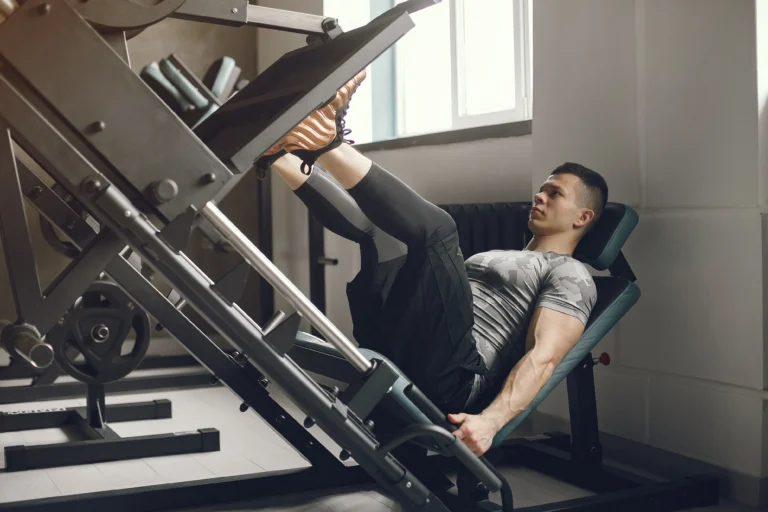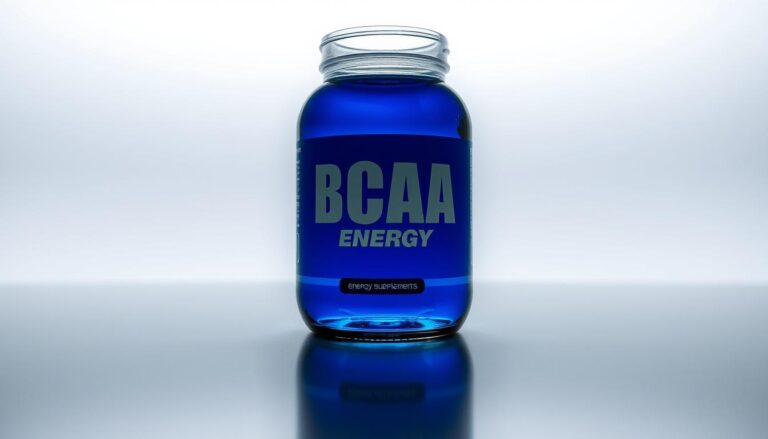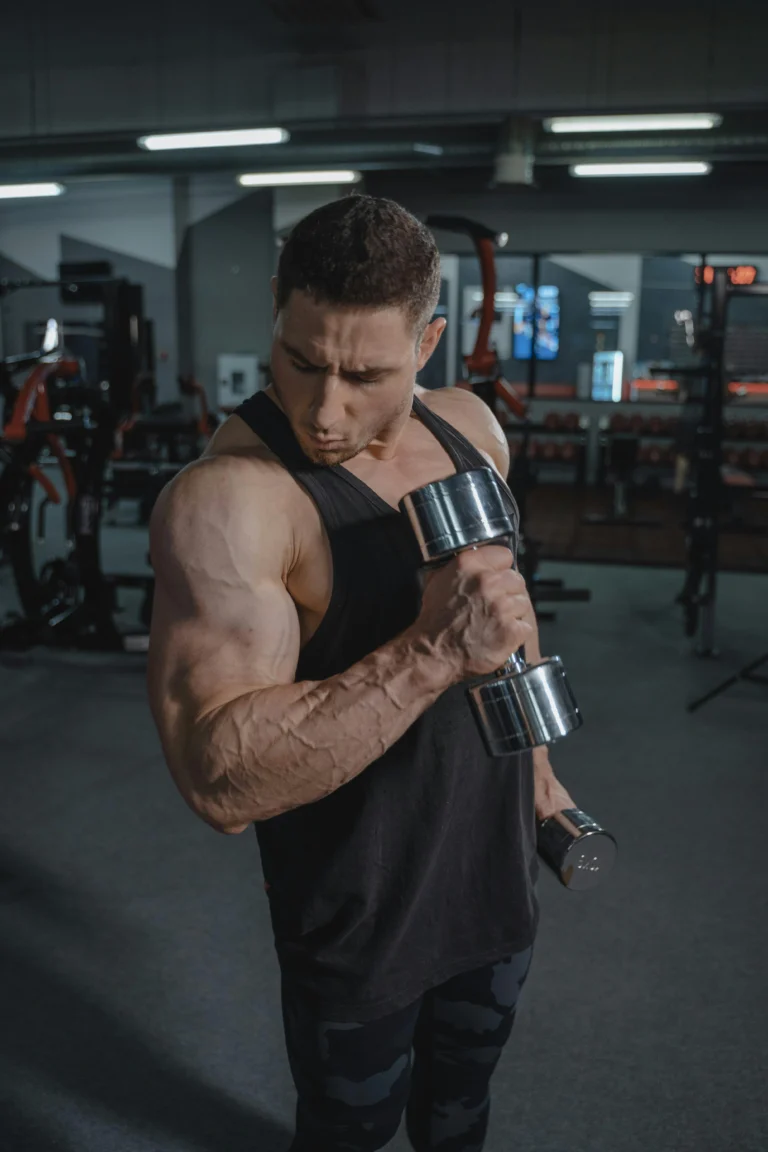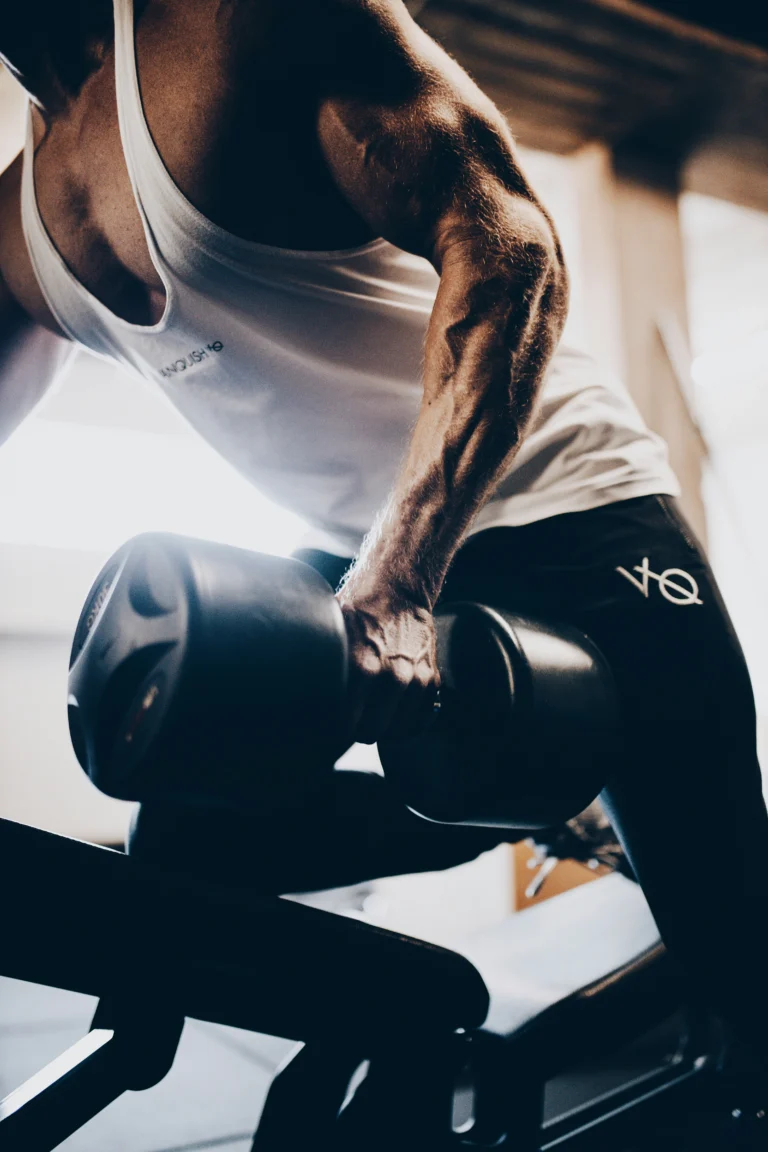The Ultimate Full Body Workout: Achieve Total-Body Fitness .
Imagine changing your fitness journey with one powerful move. Full body workouts are your secret to total-body fitness. They work on many muscle groups at once, saving you time.
Your busy life needs smart training. Full body workouts cover 86% of your muscles in one go. It’s not just quick—it’s also effective.
Full-body workouts are great for everyone, from beginners to pros. They mix different movements to build strength evenly. This helps avoid muscle imbalances.
Table of Contents
Key Takeaways
- Full body workouts engage multiple muscle groups simultaneously
- Recommended workout frequency is 3 times per week
- Each exercise typically involves 12 repetitions for optimal strength training
- Targets 4 primary movement categories for comprehensive fitness
- Suitable for various fitness levels and schedules
Understanding the Power of Total Body Training
Resistance training has changed how we see fitness. It offers a complete plan for building muscle and improving strength. Full-body workouts are great for getting the most out of your exercise and achieving fitness in all areas.
“Fitness is not about being better than someone else; it’s about being better than you used to be.”
Benefits of Multi-Muscle Group Training
Full-body workouts bring big benefits that split routines can’t match. They let you:
- Work up to 80% of your body’s muscles in one go
- Boost strength by 20-30%
- Save time for those with busy lives
- Also improve heart health
Time-Efficient Exercise Strategy
Full-body workouts are ideal for those short on time. By choosing compound exercises, you get the most results in less time.
| Exercise Type | Muscle Groups Engaged | Time Efficiency |
|---|---|---|
| Squats | Legs, Core, Back | High |
| Push-ups | Chest, Shoulders, Arms | High |
| Deadlifts | Full Body | Very High |
Balanced Strength Development Approach
Using exercises that work many muscles at once helps avoid muscle imbalances. It leads to a more balanced body. This way, no muscle is left out in your strength training.
Studies show that full-body workouts improve mental focus, lower stress, and boost fitness. Starting your fitness journey with total body training is a smart move.
Essential Movement Patterns for Full Body Workouts
Understanding fundamental movement patterns is key for effective compound exercises and optimal fitness. Our bodies are made to move in many ways, but most workouts only focus on one direction.
“Movement is the foundation of fitness, not just repetitive exercises.” – Fitness Expert
Seven key movement patterns are at the heart of full-body training:
- Horizontal Push
- Horizontal Pull
- Vertical Push
- Vertical Pull
- Squat
- Hinge
- Rotation
Each pattern targets different muscles, helping to build strength. Research shows 90% of gym-goers use these movements to boost their fitness.
These patterns do more than build muscle. They also prevent injuries by making joints more stable and mobile. Studies find balanced training can cut injury risks by up to 30%.
Your workouts should include exercises that challenge your body in many ways. This ensures muscles grow evenly, improves coordination, and boosts functional fitness.
Mastering these essential patterns lays a strong foundation for strength. It helps avoid workout plateaus and makes your body more resilient and adaptable.
Building Your Foundation: Key Compound Exercises
Compound exercises are key to a good full-body workout. They work many muscles at once. This makes your workouts more effective and helps you get stronger.
Adding compound exercises to your routine can greatly improve muscle growth and strength. Studies show they work more muscle fibers than single-muscle exercises. This leads to bigger strength gains.
Push and Pull Movements
Push and pull exercises are vital for the upper body. They help develop muscles evenly and improve strength.
- Bench Press: Targets chest, shoulders, and triceps
- Pull-ups: Engages back, biceps, and core muscles
- Dumbbell Press: Improves unilateral strength and muscle symmetry
Lower Body Power Exercises
Lower body exercises boost explosive strength and power. They are key for sports and everyday fitness.
| Exercise | Primary Muscles | Benefits |
|---|---|---|
| Barbell Back Squat | Quadriceps, Glutes, Hamstrings | Builds leg strength, improves core stability |
| Deadlift | Lower Back, Glutes, Hamstrings | Enhances overall posterior chain strength |
| Goblet Squat | Quadriceps, Core | Improves mobility and technique |
Core Stabilization Work
Having a strong core is essential for compound exercises. It helps prevent injuries and improves how you move.
“Your core is your body’s central powerhouse. Strengthen it, and you’ll improve every other movement.” – Fitness Expert
By adding these compound exercises to your routine, you’ll get a well-rounded strength workout. Focus on doing them right and keep getting stronger.
Full Body Workout Programming Fundamentals
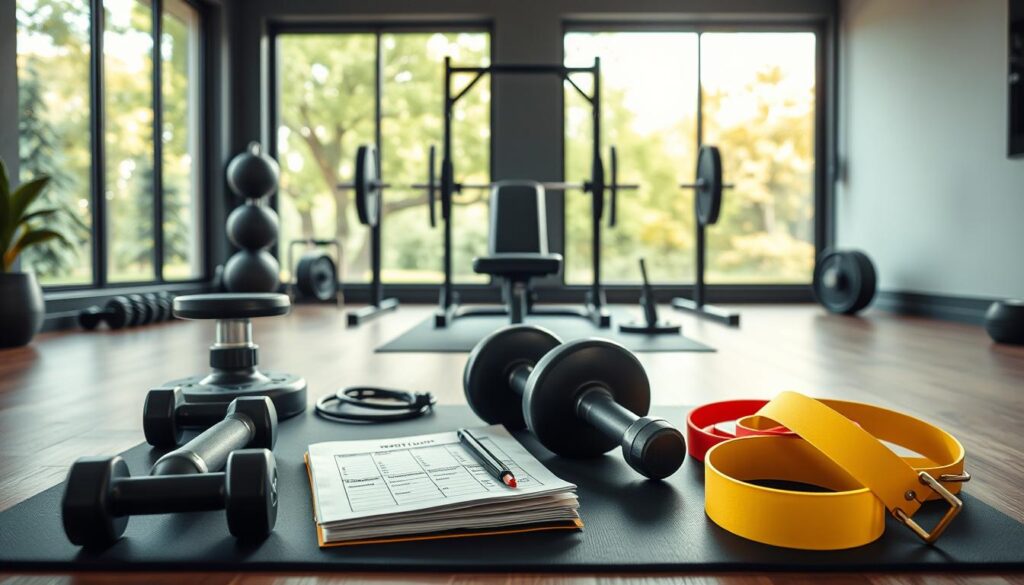
Creating a good full body workout needs careful planning. You must balance the exercises, how often you do them, and how hard you push yourself. This balance helps you get the best results without getting too tired.
When you plan your workouts, keep these basics in mind:
- Select compound movements that work many muscles at once
- Make sure to include both pushing and pulling exercises
- Use both bilateral and unilateral movements
- Plan to increase the weight or reps over time
For the best workout planning, focus on these important points:
- Choose exercises that target different muscle groups
- Do 3-4 sets for each exercise
- Stick to 8-12 reps for building muscle
- Take 60-90 seconds to rest between sets
“Success in resistance training comes from intelligent programming, not just lifting weights.”
Your workout should grow with your fitness level. People who are more advanced might need 4-8 week phases. These phases help your muscles adapt and avoid getting stuck.
Remember, workout planning is personal. Your program should match your fitness goals, how experienced you are, and how well you recover.
Optimizing Recovery and Progress
Muscle building and strength conditioning need more than just hard workouts. How well your body recovers is key to your success. Good recovery is the quiet but crucial part of getting fit.
Recovery is not just waiting for your body to heal. It’s an active effort that boosts your muscle growth and performance. Knowing how to help your body recover can greatly enhance your fitness.
Rest Period Guidelines
Rest is vital for muscle repair and growth. Here are some recovery tips to keep in mind:
- Give 24-48 hours of rest between intense workouts of the same muscle group
- Use active recovery days with gentle movements
- Pay attention to your body’s signs of tiredness and overtraining
Nutrition for Recovery
“Nutrition is the foundation of muscle repair and growth” – Sports Performance Experts
What you eat after working out is very important for muscle building. Make sure to eat:
- High-quality proteins
- Complex carbs
- Essential fats
| Nutrient | Recovery Impact | Recommended Intake |
|---|---|---|
| Protein | Muscle Repair | 1.6-2.2g per kg body weight |
| Carbohydrates | Glycogen Replenishment | 4-7g per kg body weight |
| Water | Hydration | 3-4 liters daily |
Sleep and Regeneration
Quality sleep is non-negotiable for strength conditioning. Aim for 7-9 hours of sleep to help your muscles recover and hormones stay balanced.
By focusing on rest, nutrition, and sleep, you’ll create the best environment for muscle building and improving your performance.
Advanced Techniques for Maximum Results
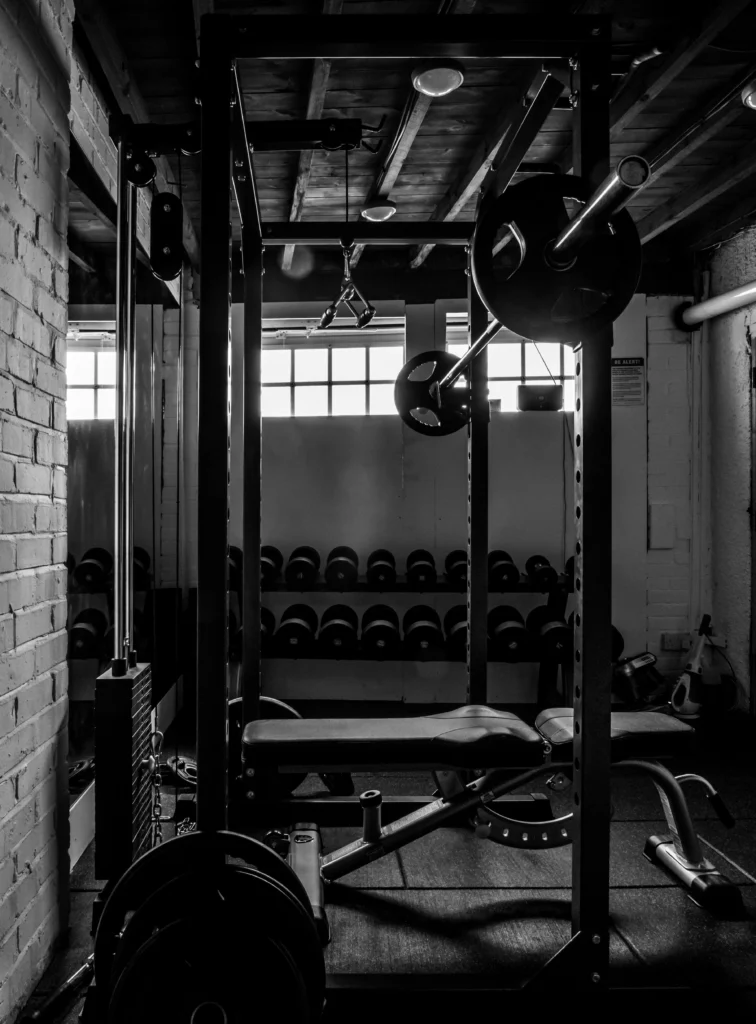
To take your full-body workout to the next level, you need advanced techniques. These methods challenge your muscles and boost your fitness. High-intensity interval training and resistance training are key to improving your routine and getting better results.
“Advanced training techniques are the secret weapon for breaking through fitness plateaus and achieving exceptional performance.” – Professional Fitness Trainer
Professional athletes and seasoned fitness enthusiasts use advanced training methods. These methods help grow muscles and make workouts more efficient. They push your body beyond what traditional training can do.
- Supersets: Combine two exercises performed back-to-back with minimal rest
- Drop sets: Perform an exercise to muscle failure, then reduce weight and continue
- High-intensity interval training: Alternate between intense bursts and recovery periods
- Trisets: Execute three exercises consecutively
- Giant sets: Complete four or more exercises without extended rest
Knowing when and how to use these techniques is key. They work best for those who have been training for at least a year. This is because they require a good base of strength training.
| Technique | Muscle Growth Potential | Time Efficiency |
|---|---|---|
| Supersets | Moderate | High |
| Drop Sets | High | Moderate |
| High-Intensity Interval Training | Moderate | Very High |
By using these advanced techniques, you can overcome fitness barriers. You’ll increase muscle engagement and optimize your workout. This will help you reach your full-body workout potential.
Common Mistakes to Avoid During Full Body Training
Resistance training and strength conditioning need careful attention. Many people unknowingly make mistakes that can hurt their progress. These errors can lead to injury or limited results.
Knowing these common mistakes can help you improve your workout. It can also prevent setbacks in your fitness journey.
Form and Technique Errors
Proper technique is key in resistance training. Up to 80% of exercisers get frustrated when they don’t see results. This is often because of incorrect form.
- Avoid rounded back during deadlifts
- Maintain proper squat depth
- Don’t lock your knees during exercises
- Breathe consistently during strength conditioning
Programming Pitfalls
Your workout plan is crucial for reaching your fitness goals. Experts point out common mistakes to avoid:
| Mistake | Consequence | Solution |
|---|---|---|
| Repeating same routine | Fitness plateau | Change workout every 4-6 weeks |
| Insufficient rest | Overtraining | Take at least one rest day weekly |
| Unbalanced exercise selection | Muscle imbalances | Include varied compound movements |
Recovery Misconceptions
“Recovery is not a luxury, it’s a necessity in strength training.” – Fitness Professional
Many people misunderstand recovery’s importance in resistance training. Remember, rest, nutrition, and hydration are just as crucial as the workout itself.
- Hydrate with 6-8 ounces of water every 15 minutes
- Get 7-9 hours of sleep nightly
- Consume protein within 30 minutes post-workout
- Listen to your body’s pain signals
Avoiding these mistakes will help you create a more effective full-body training plan.
Adapting Your Workout for Different Fitness Levels
Creating an effective full-body workout means knowing how to adjust exercises for different fitness levels. Whether you’re just starting out or are very advanced, bodyweight exercises can be tailored to fit your needs. They help improve your functional fitness.
“The key to successful training is personalization and progressive challenge.” – Fitness Expert
Beginners should start with basic bodyweight exercises. These exercises help build core strength and improve movement patterns. Your main goal should be to:
- Master proper form
- Build muscular endurance
- Develop consistent workout habits
- Gradually increase exercise complexity
Intermediate fitness enthusiasts can take their workouts to the next level by adding:
- Increased repetition ranges
- More complex movement patterns
- Reduced rest periods
- Advanced variations of basic exercises
Advanced practitioners can push their functional fitness by trying:
- Plyometric variations
- Complex movement combinations
- High-intensity interval training (HIIT)
- Progressive overload techniques
Remember, the Progressive Overload principle is key. Gradually increase workout intensity to keep challenging your body and avoid fitness plateaus.
Conclusion
Your full body workout is more than just exercise. It’s a way to get fit all over. Studies show that using methods like Daily Undulating Periodization (DUP) can boost strength and body shape in just 30-45 minutes.
Choosing a full body workout has big benefits. It helps burn calories and build muscle. By changing how often you do reps and working different muscles, you get better results than old ways. This method also helps balance strength and avoid overtraining.
Being consistent is key to getting fit. Sticking to a full body workout plan can unlock amazing strength, endurance, and health gains. Science backs up that smart training leads to big changes in your body.
Begin your fitness journey today with the tips from this guide. Your body can adapt in amazing ways with smart training. Change how you see fitness and see the power of full body workouts.
FAQ
What exactly is a full-body workout?
How often should I do full-body workouts?
Are full-body workouts suitable for beginners?
What are the key benefits of full-body training?
How long should a typical full-body workout last?
Do I need special equipment for full-body workouts?
How can I prevent plateaus in my full-body training?
What’s the difference between full-body and split workouts?
How important is nutrition in full-body workout success?
Can full-body workouts help with weight loss?
Source Links
- How Full-Body Workouts Can Help You Build Balanced Fitness – https://www.menshealth.com/fitness/a25666996/full-body-workout-new-year/
- The Best Full-Body Workouts for a Well-Rounded Fitness Routine | Hydrow – https://hydrow.com/blog/the-best-full-body-workouts-for-a-well-rounded-fitness-routine/
- Full Body Workout | Total-Body Fitness at KARVE Gyms – https://karve.club/full-body-workout/
- In What Order Do I Do A Full Body Workout? – https://stayfitcentral.com/in-what-order-do-i-do-a-full-body-workout/
- Personal Training for the Whole Body: The Science Behind the Mind-Body Connection and How It Unlocks Fitness Goals – https://truecoach.co/learning-resources/full-body-workout/
- These 7 Movements Form the Foundation for Every Effective Strength Workout for Runners – https://www.runnersworld.com/training/a63691455/movement-patterns/
- The 7 Fundamental Movement Patterns Your Program Needs | BarBend – https://barbend.com/fundamental-movement-patterns/
- The Seven Fundamental Movement Patterns, Explained By A CPT | Garage Gym Reviews – https://www.garagegymreviews.com/fundamental-movement-patterns
- 6 Best Compound Exercises | ATHLEAN-X – https://athleanx.com/articles/best-compound-exercises?srsltid=AfmBOoozY-YOWHLVzJ9bUSE71T1DmGRk-EWC-s1_rfdRbwUqjMbirMYl
- The 15 Best Compound Exercises for Muscle and Strength – https://www.strengthlog.com/compound-exercises-list/
- New Year, Stronger You: 5 Full-Body Workouts That Build Muscle, Fast – https://www.menshealth.com/uk/building-muscle/a28433729/full-body-workouts/
- The Ultimate Full Body Program – Meghan Callaway – https://meghancallawayfitness.com/the-ultimate-full-body-program/
- The Ultimate Full Body Program For Beginners To Intermediates – Meghan Callaway – https://meghancallawayfitness.com/the-ultimate-full-body-program-for-beginners-to-intermediates/
- Maximizing Your Workout Recovery: A Comprehensive Guide – https://www.polar.com/en/guide/workout-recovery?srsltid=AfmBOoqIkOKQUqDRtjUcYR_n6gPYG2sj12PVbPy1ta0y9eFtvx47ZFej
- Unlocking Optimal Performance: A Guide to Post-Workout Soreness and Recovery – https://www.orangetheory.com/en-us/articles/guide-to-recovering-from-workouts-maximizing-recovery-for-optimal-performance
- This Workout Strategy Will Give You Results and Save You Time – https://www.cnet.com/health/fitness/full-body-vs-split-workouts-only-one-is-actually-worth-your-time/
- Advanced Full Body Training for Hypertrophy – https://www.adapt-performance.com/post/advanced-full-body-training-for-hypertrophy
- 15 Advanced Strength Training Techniques for Muscle & Strength – https://www.strengthlog.com/advanced-strength-training-techniques/
- Should You Go to the Gym Every Day? – https://www.verywellfit.com/how-to-avoid-the-5-biggest-workout-mistakes-3495983
- Fitness Gallery: See Mistakes That Sabotage Your Workout – https://www.webmd.com/fitness-exercise/ss/slideshow-fitness-mistakes
- Adaptation Exercises: Modifying Workouts To Include All Abilities – https://momentuminjury.com/inclusive-adaptation-exercises-for-different-abilities/
- From Beginner to Advanced: Crafting the Perfect Workout Routine – https://fitness-nation.net/from-beginner-to-advanced-crafting-the-perfect-workout-routine/
- Designing Effective Workout Programs for Different Fitness Goals: A Guide for Personal Trainers – https://www.fitbudd.com/post/designing-effective-workout-programs-for-different-fitness-goals-a-guide-for-personal-trainers
- Here’s Why You Should Do Full Body Workouts Every Day – https://stayfitcentral.com/heres-why-you-should-do-full-body-workouts-every-day/
- Debunking the Split vs. Full-Body Workout Debate: What The Science Says – https://smartgolffitness.com/debunking-the-split-vs-full-body-workout-debate-what-the-science-says/
